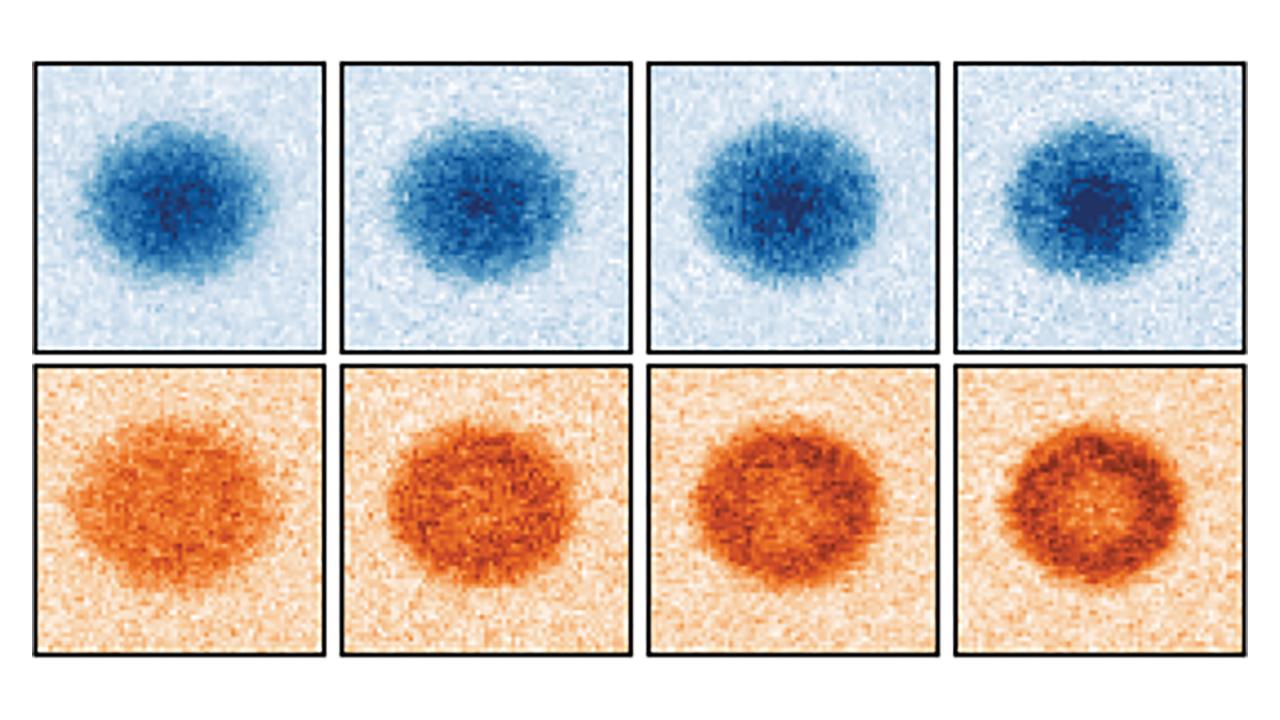When studying complex materials, condensed matter physicists often harness the Fermi-Hubbard model to explore a material’s electric, magnetic and superconductive properties. But the model isn’t without limitations. Historically, its theoretical and experimental applications have been limited to atoms with electrons that exist in two possible states.
In new research appearing in Physical Review Letters, an international research team, including UC Davis physicists, expanded the Fermi-Hubbard model, allowing for a more detailed exploration of materials and their properties. In the study, the researchers measured the equation of state for ytterbium atoms in an optical lattice. Specifically, they used the fermionic isotope ytterbium-173, which is a metallic element with atoms that can adopt six possible states.
“We’re all familiar with the phase diagram of water, how it can be solid, liquid or gaseous depending on temperature and pressure,” said Eduardo Ibarra-Garcia-Padilla, a postdoctoral researcher who works in the laboratory of Professor Richard Scalettar, Department of Physics and Astronomy. “The equation of state is all about how a material’s thermodynamic properties, such as density, depend on physical parameters, such as temperature and pressure.”
The same can be said for materials at the quantum level. Their thermodynamic properties also depend on things like density, pressure, temperature and more. By expanding the Fermi-Hubbard model and having experimentalists confirm its veracity, the researchers provided the foundational research necessary for scientists to richly explore atoms that exhibit complex properties like different types of magnetism and superconductivity.
“One of the open questions in condensed matter physics is, what is going on with high-temperature superconductivity and what gives rise to this behavior?” said Ibarra-Garcia-Padilla. “Experiments, like this one, allow us to simulate the Fermi Hubbard model and probe its physics. In other words, experimentalists can carefully tune all the desired parameters and precisely measure how quantities, such as density, change."
"If we can gain some understanding of what drives possible superconductivity in a model, then that would give us an understanding of what’s going on in real materials like cuprate superconductors,” he said.
Unique for their high-temperature superconductivity, cuprate superconductors are poised for such applications as quantum computing and power transmission.
Disentangling emergent properties
Ibarra-Garcia-Padilla used colors to contextualize the multiorbital nature of their Fermi-Hubbard model. Whereas the standard Fermi-Hubbard model only accounts for atoms in two states, or two colors, the new model can be used to work with atoms that exhibit three, four or even six different states.
“When you add more colors into the mixture, the physics can change significantly,” he said. “What that means is that by changing the number of colors, the models are substantially different, and therefore the type of magnetic orderings and other correlations in the model are fundamentally distinct.”
With more “colors” in the model, physicists gain another degree of control over a material of interest, potentially allowing them to uncover why certain materials exhibit superconductivity, magnetism or strange metallic phases, among other properties.
“It works in the same way that a painting becomes richer and more beautiful with a wider palette,” Scalettar said.
A pipeline from theory to experiment
To accomplish this on the theoretical side, Ibarra-Garcia-Padilla and collaborators developed and refined computational methods to numerically solve these multiorbital models. He and other theorists then collaborated with experimentalists to validate and explore the model, creating a pipeline between the theoretical and experimental.
“Essentially, there are some regimes that are easy for us to access but hard for experimentalists to access, and vice versa,” Ibarra-Garcia-Padilla said.
What’s more, the team successfully linked their general equation of state for the Fermi-Hubbard model to validate a theory-free measurement of the temperature in the experiment, something that’s generally hard to do on the experimental side alone. This information provides a thermometer to experimentalists and can be harnessed to explore quantum states of matter.
“It’s a very nice tool because as they run experiments, they can use the temperature to characterize which regime they’re operating in,” Ibarra-Garcia-Padilla said. “We successfully took important steps to determine the phase diagram of this model.”
Media Resources
Equation of State and Thermometry of the 2D SU(N) Fermi-Hubbard Model (Physical Review Letters)
A General Equation of State for a Quantum Simulator (Physics)
Greg Watry is a content strategist with the UC Davis College of Letters and Science. A version of this story was originally published on the college's web site.
